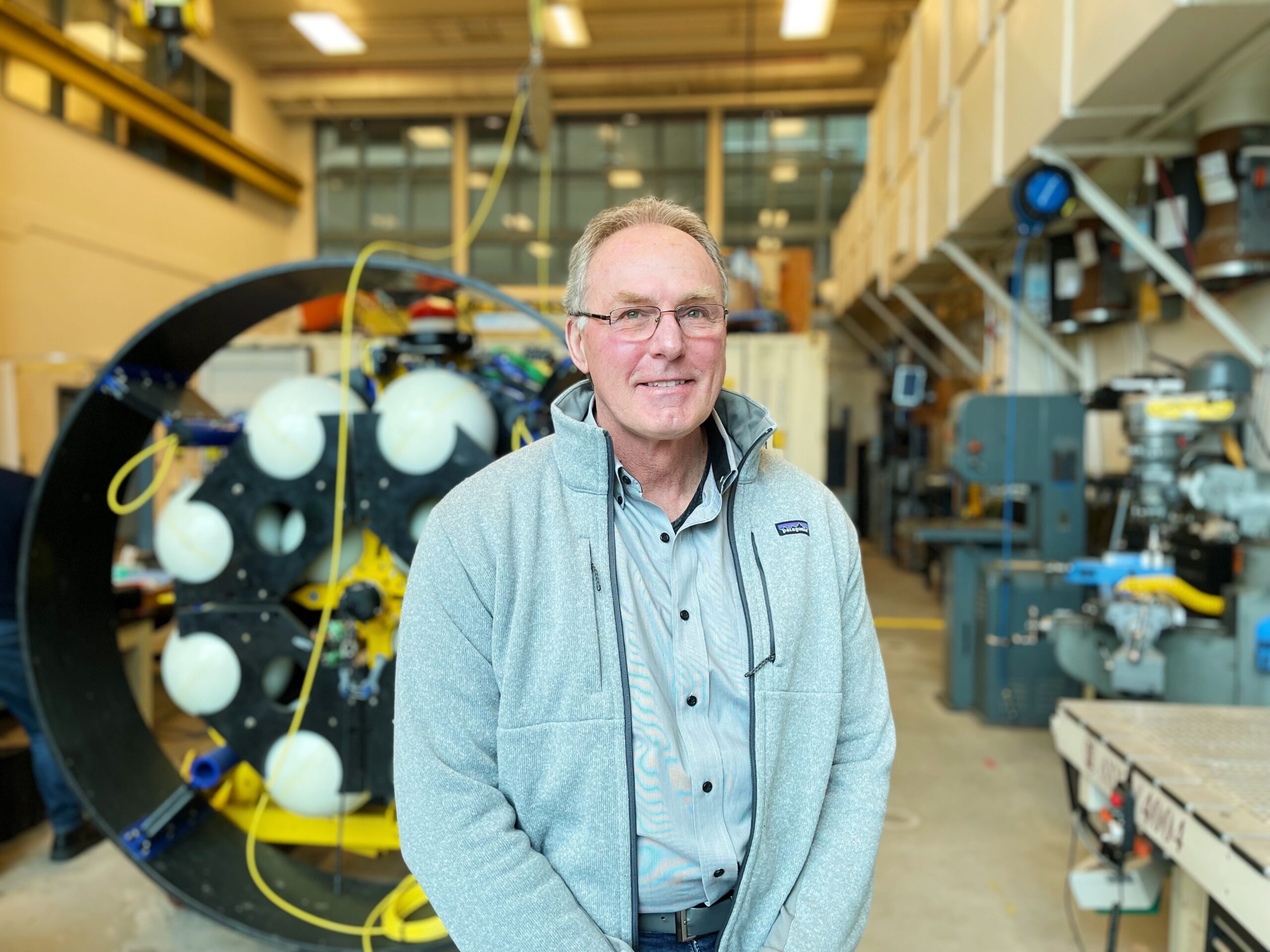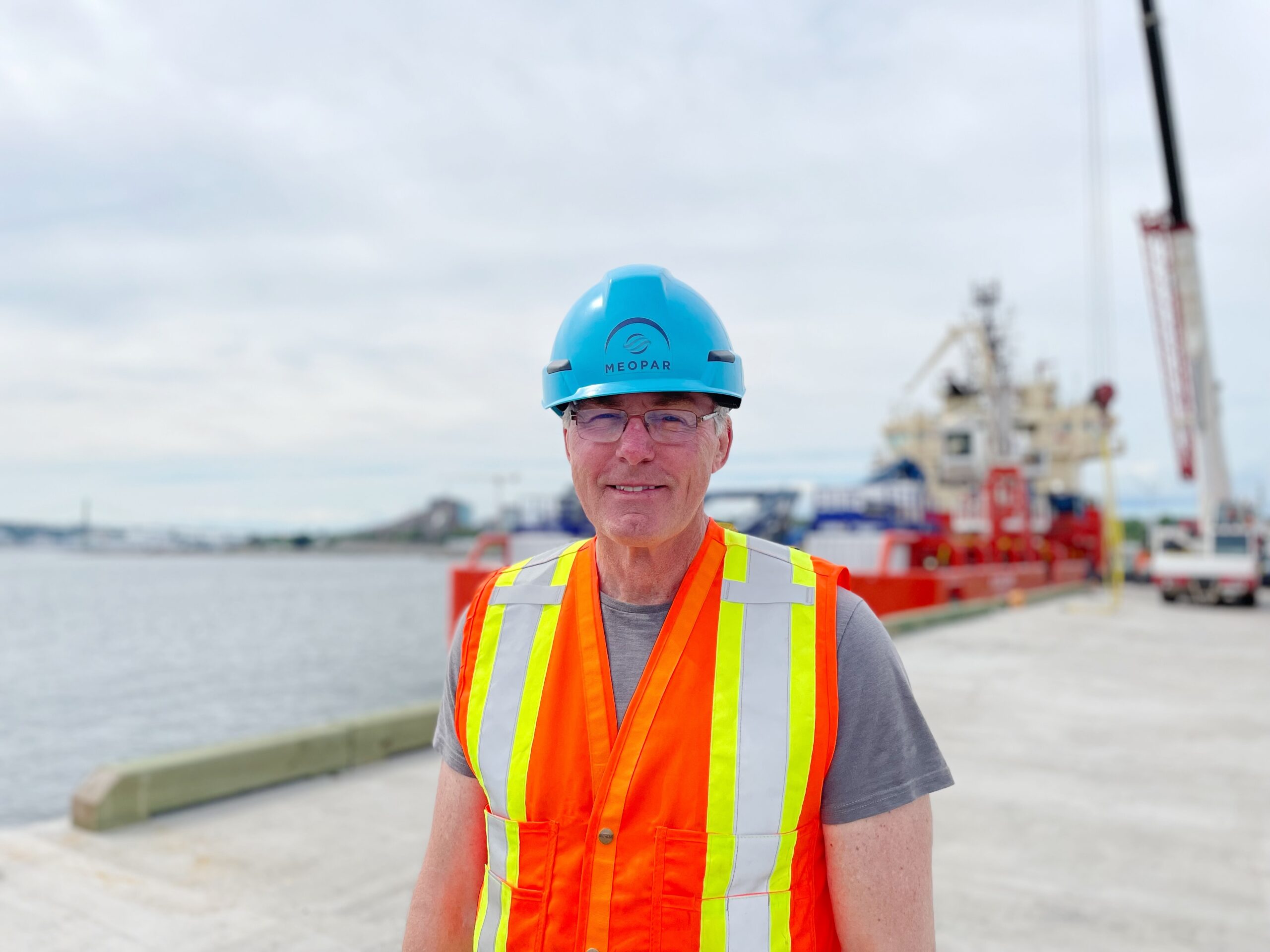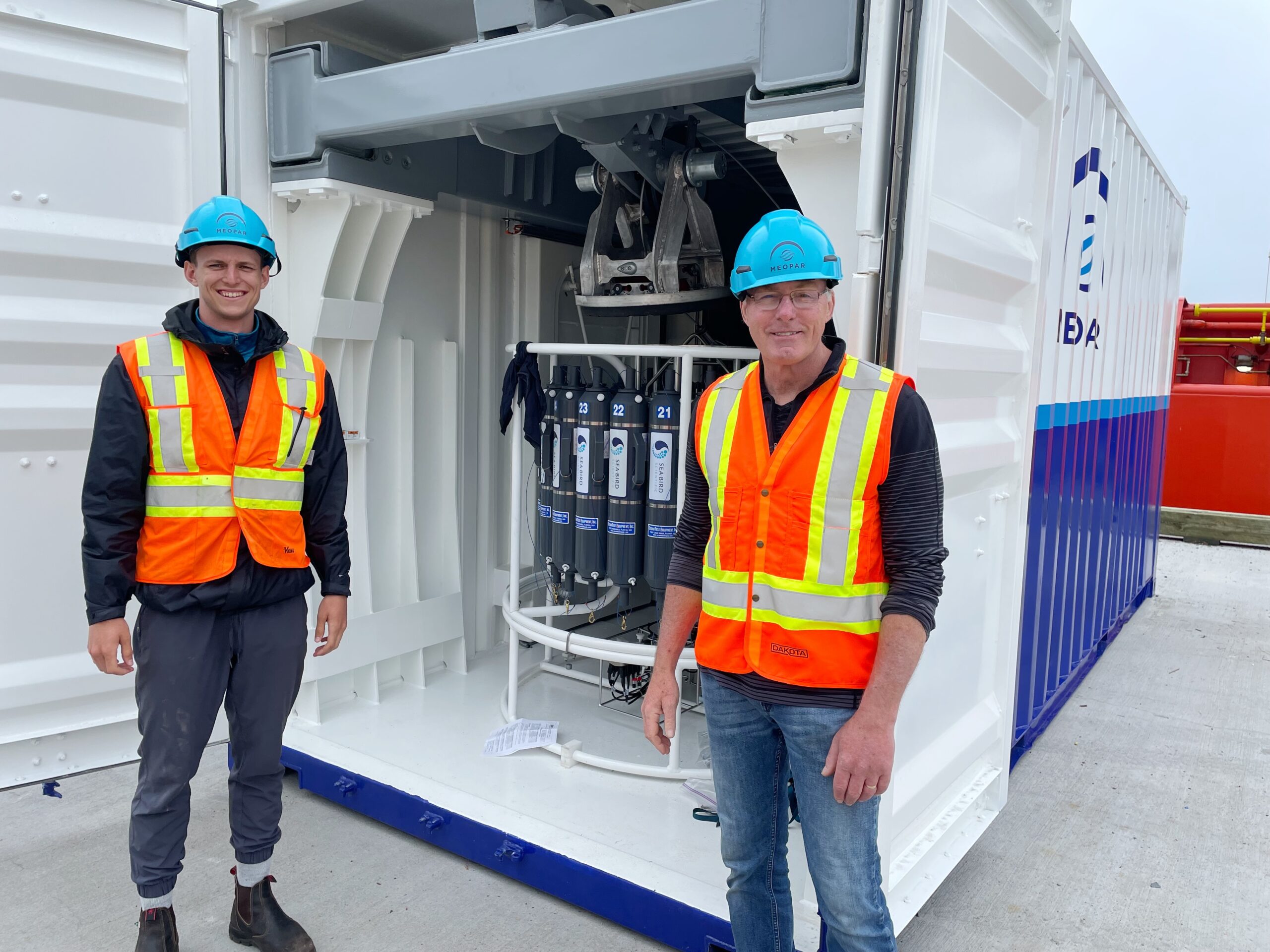Dan Gibson on Changing Ocean Research with Modular Infrastructure
Dan Gibson didn’t have a plan when he moved back to Nova Scotia.
Then, he found MEOPAR’s MORI (Modular Ocean Research Infrastructure) project. MEOPAR was looking for a project manager to bring the project to life and prove its viability through a two-year initial development and demonstration phase.
After a successful 30-year career working in the marine equipment industry, traveling the world, gaining experience across industries including research, oil and gas, and commercial marine, he was thinking he’d slow down. He started doing some consulting, sharing the skills and knowledge he accumulated overseeing strategy and sales growth for marine technology companies in countries around the world.
“I stumbled across this requirement from MEOPAR and I read through it and I thought, ‘This is a really interesting project,’ because for me specifically it would basically be a capstone in that ties together a lot of the elements of my background into this one project, which was quite innovative,” says Gibson.

Dan Gibson sits in the CERC.Ocean Lab in front of the SeaCycler.
“That’s what I hope to accomplish. To put together a system and prove the viability of converting a vessel of opportunity into a platform to conduct world-class science.”
A Deep Love for the Ocean
As a child growing up in southern Ontario, he wasn’t close to the sea. But his family would pile into the car and drive down the sandy road to the beach on Lake Erie. The thrill and awe of looking out over the water sparked a fascination for Gibson that drew him to working on the ocean.
“I remember cresting that berm and then seeing the lake out in front of us and it was like my chest opened up. It was just … awe,” says Gibson with faraway smile. “It was just such a beautiful sight. And that love of the marine environment, whether it’s the Great Lakes or any lakes or any water, but particularly the ocean, it’s a part of my core.”
This love for the ocean at his core led him to study oceanography and pursue a career in marine technology. He married that with an MBA, giving him the skills he needed for his career in marine technology, overseeing business units, optimizing operations, improving productivity, and strategically managing many different projects around the world. With every project, he learned something new.
“There are lessons learned in every single project you do. It’s an ingoing experience,” Gibson says.
These lessons learned and skills in project management have made him the right person for the job. MEOPAR’s Scientific Director, Dr. Doug Wallace, says his real-world experience, enthusiasm, and spirit of hard work have been the key to bringing the project to life and on course.
“He always says, ‘Doug, let’s get back to the agenda,’” says Wallace. “Coming from industry, he keeps our vision in check with some reality and this is extremely valuable for MEOPAR and the MORI project. He tempers the academic vision of MORI with realism.”

Sailing through Year Two
Gibson’s mix of enthusiasm and realism led MORI through its first cruise season, in 2021. Two research cruises sailed last year, one led by the Offshore Energy Research Association (OERA) and the other led by researchers from Dalhousie University. The success of both cruises proved MORI’s viability, and the team learned valuable lessons.
“The trick about modular system is you have to make sure you can get the mobilization done quickly,” Gibson says. “We learned a lot of things on how to expedite the mobilization process.”
Harnessing the power of strong partnerships brought MORI to life successfully. MORI’s Initial Development and Demonstration phase is supported by Irving Shipbuilding Inc. The project also has also partnered with COVE Ocean – Centre for Ocean Ventures & Entrepreneurship, the National Research Council, Natural Resources Canada, the Department of Fisheries and Oceans, Defence Research and Development Canada, and Hawboldt Industries, who collaborated with the project, designing new equipment.
“MORI would definitely not have happened as it did last year without the huge support from all different types of partners,” says Gibson. “The idea of MORI is there are a lot of different people involved with marine research, not just in academia, but defense department, commercial applications, and things of that nature. Building partnerships between all of the different players on the stage makes a lot of sense, if you can share resources, and that’s one of the things we’re trying to do this year.”
Gibson is excited about the new developments with MORI this year. One research cruise is underway, with a second scheduled for August, and new equipment has been custom built. A CTD rosette launch and recovery system (LARS) and a raised platform for launching equipment have both been designed with the lessons of last year’s season in mind. As envisioned by the MORI team, everything is completely modular and ready to support the varied needs of the MORI cruises.
“The type of cruises we’re doing this year are a bit different. And that’s going to be one of the really nice things, to illustrate the MORI project is its diversity,” says Gibson. “You can set up the system to accommodate different research requirements. Last year we did benthic research, bottom research in the deep ocean, and we also did water column research. This year, we’ve added to the mix marine atmospheric research.”
MORI’s Vision of the Future
As MORI launched into its second cruise season, it has drawn wide interest, from Canada and beyond.
“It’s not only Canadian researchers than can benefit from the MORI program, but other researchers as well, “ says Gibson. “So, there are possibly some partnerships there that are just going to expand.”
With a busy season underway, Gibson is happy to be living and working near the ocean. He enjoys diving in warmer waters of the Caribbean Ocean, sailing with his brother on the West Coast, and trying surfing. Even if he isn’t great at it, just “getting out into the water and paddling around in the waves. I just love it,” he says.
As he drives up a sandy road to the beach, he remembers those trips of his childhood and the moment of overwhelming awe inspired him.
“It still happens,” he says.


